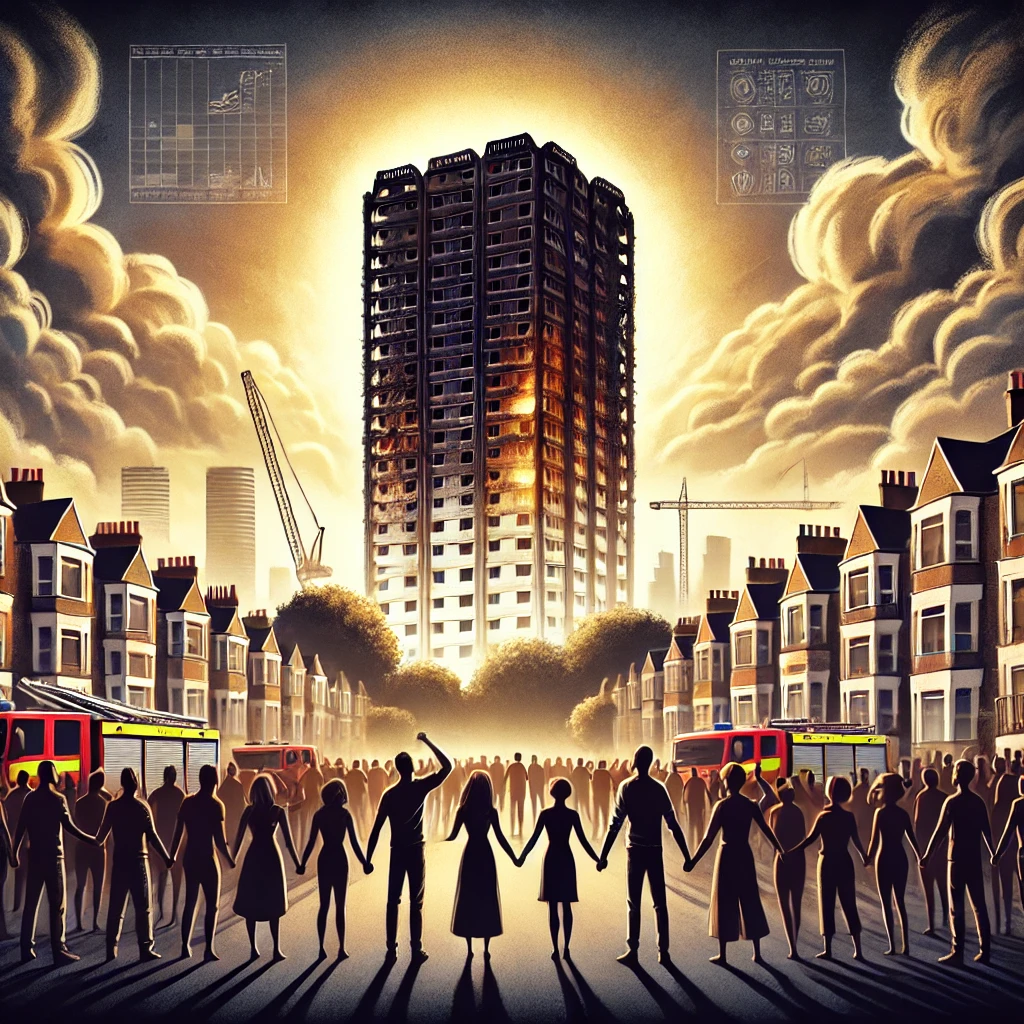As November 2017 approaches its close, the world continues to grapple with the implications of the Grenfell Tower fire—a disaster that has left a profound mark on public consciousness and fire safety policy. The June 14 blaze in London claimed at least 72 lives, injured dozens, and left hundreds displaced. Five months later, the event remains a catalyst for discussions about systemic failures, accountability, and the urgent need for reform in fire safety practices.
The Tragedy: What Happened at Grenfell Tower?
Grenfell Tower, a 24-story residential building in North Kensington, London, was engulfed in flames in the early hours of June 14, 2017. The fire is believed to have started in a malfunctioning refrigerator in one of the flats before rapidly spreading throughout the building.
The key factors that contributed to the scale of the disaster include:
- Flammable Cladding: Investigations revealed that the building’s exterior cladding, installed during a 2016 refurbishment, was highly flammable. The aluminum composite material (ACM) panels with a polyethylene core acted as a conduit, spreading the fire at an alarming rate.
- Poor Fire Containment: Reports indicate that fire doors failed to contain the blaze, allowing flames and toxic smoke to spread through the building’s single stairwell—the only evacuation route.
- Inadequate Safety Measures: Many residents reported not hearing fire alarms, and some were instructed by authorities to “stay put” in their flats, a protocol that proved fatal in this instance.
The Human Toll
The Grenfell Tower fire disproportionately affected low-income and minority residents who lived in the public housing block. Survivors and bereaved families have expressed anger over the perceived neglect by authorities, alleging that their concerns about fire safety were repeatedly ignored in the years leading up to the tragedy.
The fire left hundreds homeless, sparking a broader conversation about social inequality in housing. Many displaced residents are still awaiting permanent housing solutions as of November 2017, adding to the outrage over the systemic failures exposed by the disaster.
Lessons Learned
1. The Importance of Fire-Resistant Materials
The use of flammable cladding was a pivotal factor in the Grenfell Tower fire. Since the disaster, there has been an urgent review of cladding materials used on high-rise buildings across the UK and beyond. Thousands of buildings with similar cladding have been identified, and governments are racing to ensure their removal or replacement.
2. Revisiting “Stay Put” Policies
The “stay put” strategy, designed to prevent panic and facilitate efficient firefighting, came under intense scrutiny after Grenfell. The incident demonstrated that this policy can fail catastrophically in certain scenarios, prompting authorities to reconsider its application in high-rise buildings.
3. Accountability in Building Management
The fire revealed systemic neglect in the management of Grenfell Tower. Residents had repeatedly raised concerns about safety risks, including inadequate fire exits and exposed gas pipes, but these warnings went unheeded. The tragedy has sparked calls for greater accountability and tenant involvement in housing decisions.
4. Enhancing Fire Safety Regulations
In the aftermath of Grenfell, the UK government announced a comprehensive review of building safety regulations. The tragedy has underscored the need for stricter fire codes, regular inspections, and the retrofitting of sprinkler systems in older buildings.
5. Emergency Response Improvements
The fire also highlighted gaps in emergency response protocols, from evacuation strategies to the communication of safety information. Authorities are now exploring ways to enhance coordination and ensure that residents receive timely, accurate guidance during crises.
Global Impact
The Grenfell Tower fire has had ripple effects beyond the UK, prompting countries worldwide to reassess their own fire safety standards. Australia, Canada, and the United States, among others, have initiated reviews of cladding materials and fire safety protocols in high-rise buildings.
Moving Forward
As of November 2017, the public inquiry into the Grenfell Tower fire is ongoing, with survivors and advocates demanding justice and meaningful reform. While the tragedy has been a wake-up call, its true legacy will depend on the actions taken to prevent such an event from ever happening again.
The Grenfell Tower fire is not just a story of loss—it is a rallying cry for safer housing, greater accountability, and a society that prioritizes the lives and well-being of all its residents, regardless of income or status.





